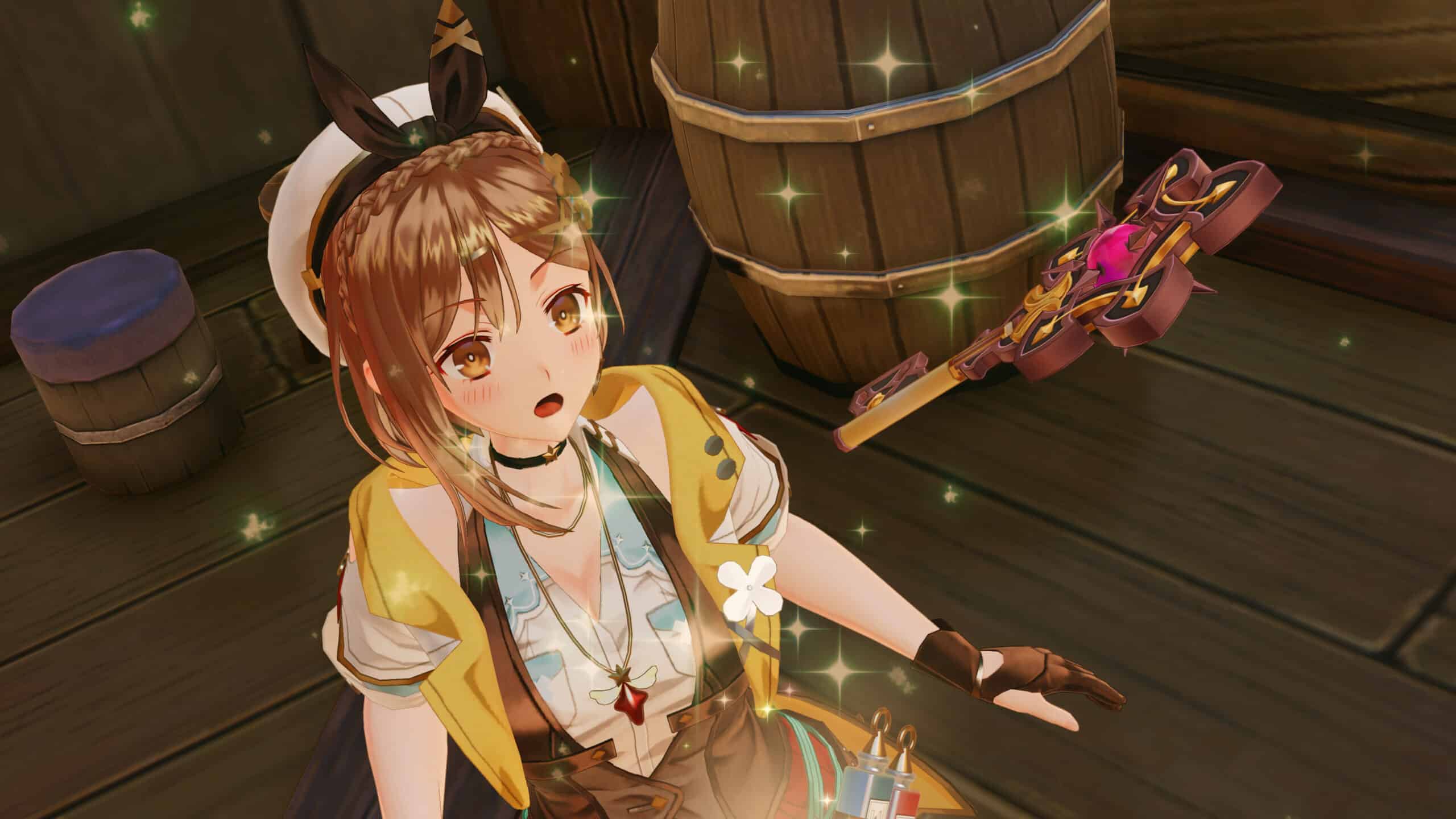The Atelier franchise are classic JRPGs developed by Gust, and published by both Gust and Koei Tecmo over the years. Renowned for its deep lore established all the way back in 1997, the franchise is split into several different series: Salburg, Gramnad, Iris, Mana, Arland, Dusk, Mysterious, and Secret. Each series tells its own story, with brand new characters in each. As a result, there has been a massive amount of games in the Atelier franchise, with a dedicated fanbase always ready for the next installment.
Atelier Marie: The Alchemist of Salburg (1997)
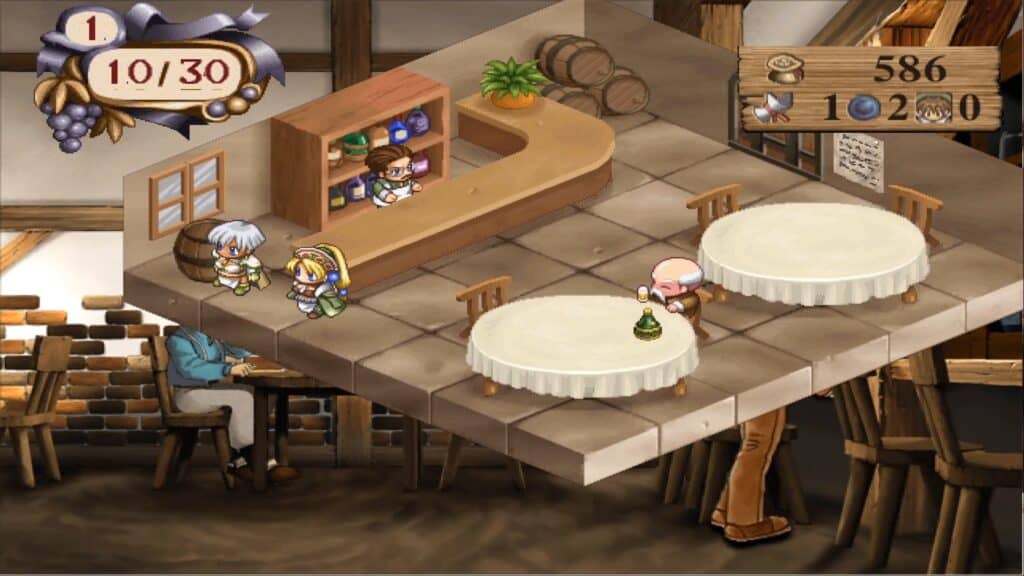
©Screenshot from Atelier Marie: The Alchemist of Salburg.
The first game in the Atelier series, Atelier Marie: The Alchemist of Salburg sets the franchise up for things to come. You play as Marie, a young alchemist looking to save her workshop from being closed for good. This story is told through a series of quests, where she’ll meet a bunch of interesting characters along the way. Marie learns more about the town of Salburg as she grows in alchemical ability.
The gameplay features an element of time management, with traditional JRPG turn-based combat also key to the experience. You’ll be spending lots of time gathering ingredients from a variety of locations. Then, you can experiment with different ingredients to make various potions, improving Marie’s ability in the field.
While Atelier Marie: The Alchemist of Salburg is a solid JRPG even today, it’s hard to believe it spawned a massive franchise.
Atelier Elie: The Alchemist of Salburg 2 (1998)
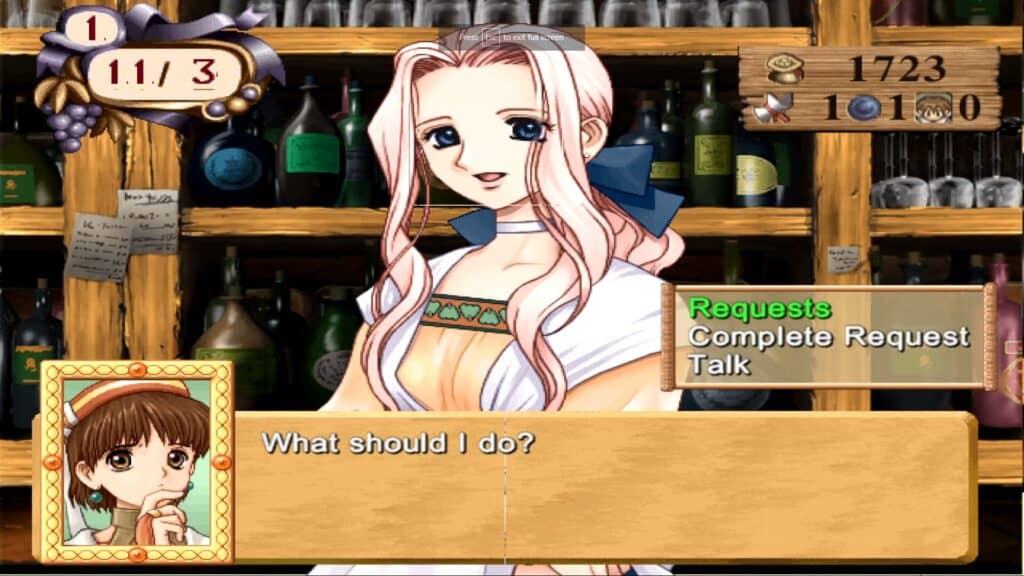
©Screenshot from Atelier Elie: The Alchemist of Salburg 2.
Released just a year after the original, Atelier Elie: The Alchemist of Salburg 2 doesn’t massively rock the boat. This time around, you play as Elie, another aspiring alchemist hailing from the town of Salburg. The stakes are higher, with Elie taking on her adventure to save the entire town.
While the core gameplay is extremely similar to its predecessor, there are a few key differences that make Atelier Elie: The Alchemist of Salburg 2 a worthy sequel. First, the alchemy system has more options than ever, with more recipes for you to experiment with. Second, the game adds a day-night cycle, meaning your time management becomes even more important to keep on top of.
Atelier Lilie: The Alchemist of Salburg 3 (2001)
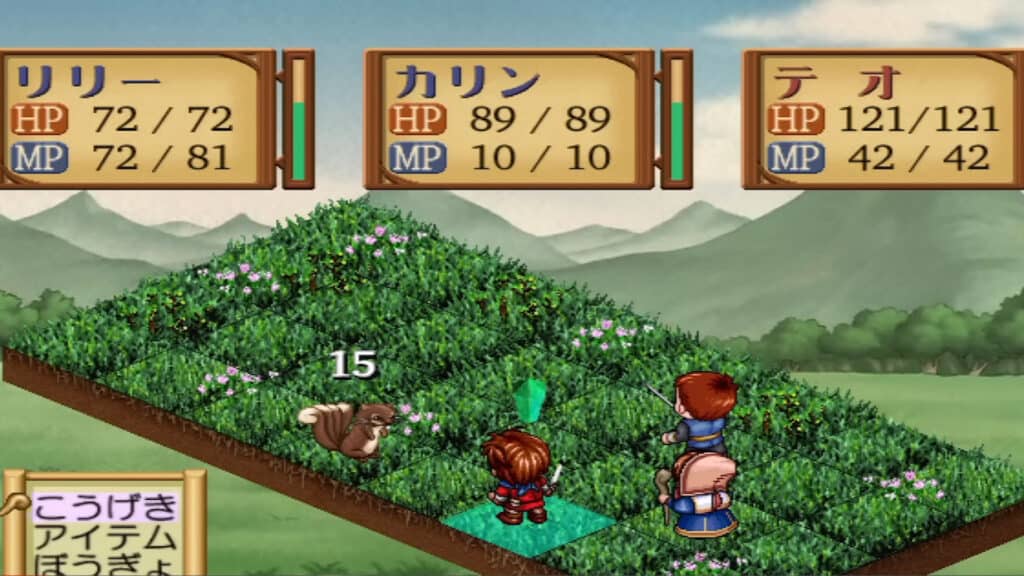
©Screenshot from Atelier Lilie: The Alchemist of Salburg 3.
Finishing off the Salburg trilogy, Atelier Lilie: The Alchemist of Salburg 3 follows yet another young alchemist looking to make a name for themselves in Salburg. Despite being the third game in the trilogy, this title is actually a prequel, taking place two decades prior to the original. Lilie wants to build an alchemy academy in the town, and the game follows her struggle to prove to King Schigsal that it’s a worthwhile endeavor.
Despite the three-year gap in releases, there’s very little new to the gameplay formula. The visuals are improved as a result of the jump to the PlayStation 2, but at its core you’re doing much of the same stuff as before. You’re gathering ingredients, making potions, and doing quests alongside turn-based combat.
Atelier Judie: The Alchemist of Gramnad (2002)
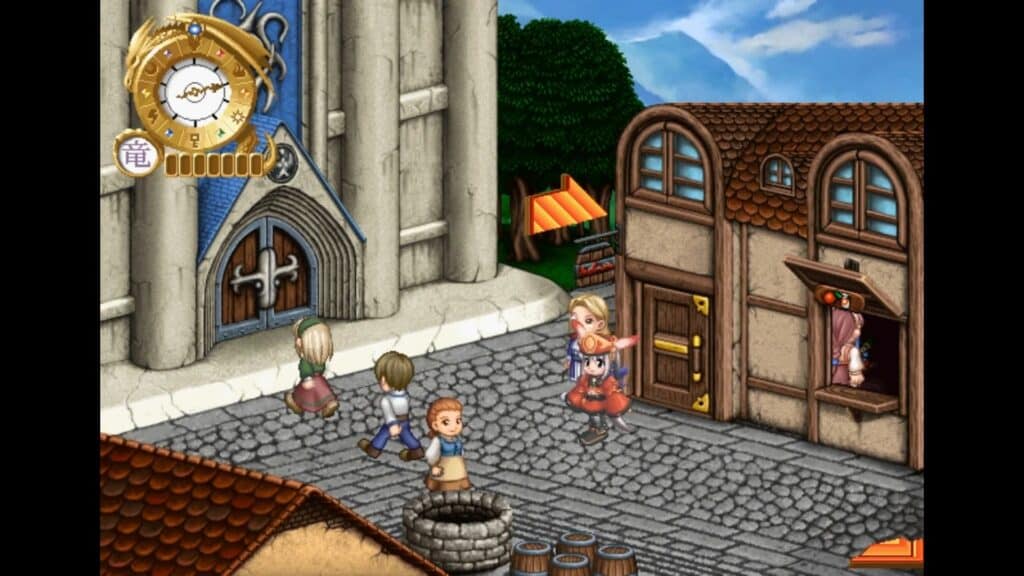
©Screenshot from Atelier Judie: The Alchemist of Gramnad.
The first game in the Gramnad series, Atelier Judie: The Alchemist of Gramnad follows Judith Volltone, a lonely alchemist whose life changes forever after she accidentally creates a time travel potion. After accidentally traveling 200 years into the future, you must help her find a way to get back to her own time period.
This game saw several changes to the gameplay formula to keep things fresh. First, the stat systems were made easier to understand outside of combat, making it much more accessible to the average player. Second, the RPG systems were improved dramatically, with dungeon exploration added into the game. ‘Traits’ were added to every single item, a feature that would go on to become a key part of the experience in later games.
By moving away from the Salburg series, Atelier was able to branch out in interesting new ways. The series was certainly better for it.
Atelier Viorate: The Alchemist of Gramnad 2 (2003)
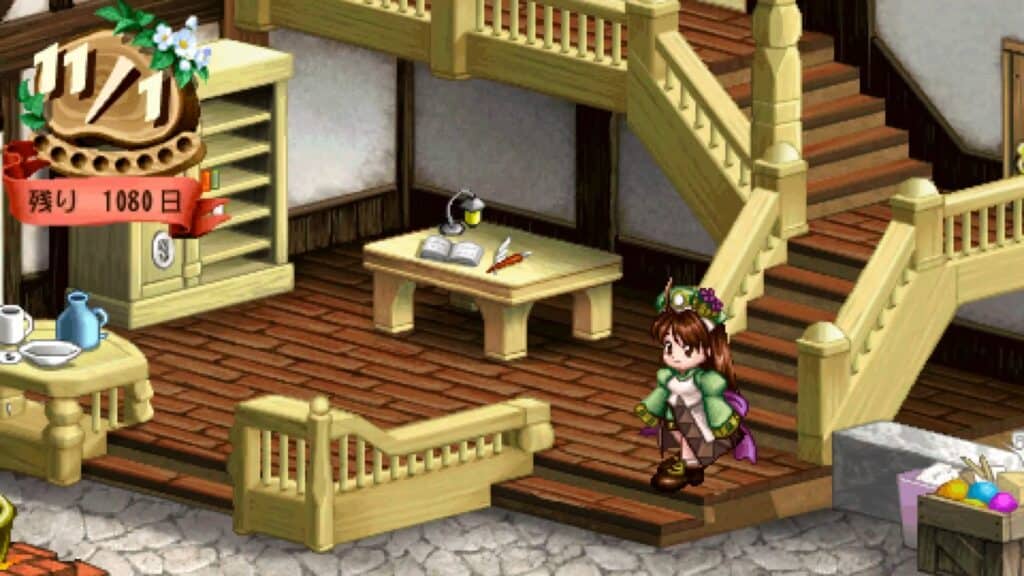
©Screenshot from Atelier Viorate: The Alchemist of Gramnad 2.
In Karotte Village, a young family is moving away. The protagonist of the game, Viorante, decides she doesn’t want to leave, and opens up a shop to prove she can survive on her own. Her parents claim they will return in a few years to check up on how she’s doing, and in the meantime, it’s up to you to help her build up her store. Compared to previous games, the stakes are slightly more personal this time.
While alchemy remains a part of the gameplay, it’s not as essential as in previous releases. This time, most of your time is taken up trying to run the store. You’ll decide what kind of goods it sells, hire the staff, and interact with customers. You can take a more hands-on approach, or staff the store so that you have time to venture out on quests. With eleven possible endings, your success will depend on your dedication to building up the store.
Atelier Iris: Eternal Mana (2004)
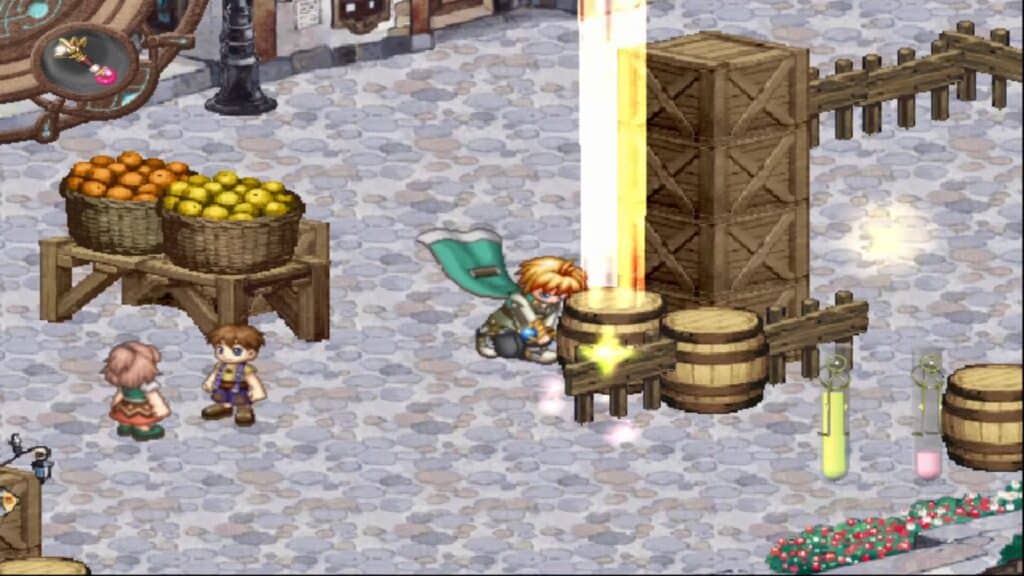
©Screenshot from Atelier Iris: Eternal Mana.
The first game in the Iris series is Atelier Iris: Eternal Mana. After being saved from death by monster hunter Lita Blanchimont, young Klein Kiesling joins forces with her to become a monster hunter himself. You play as Klein as he takes the first steps in his new journey, which becomes larger than he ever imagined when it becomes a quest to save the world.
Once again, alchemy takes a back seat in this game, more so for lore reasons than anything else. You can still craft items, but it’s no longer central to the experience. Instead, combat is much revised, despite still being turn-based. You can arrange your fighters prior to each battle, giving you more control over the battlefield.
As the first game in the franchise to be localized outside of Japan, it was the wider world’s first taste of Atelier. Considering the success the franchise continues to enjoy to this day, it must have done something right.
Atelier Iris 2: The Azoth of Destiny (2005)
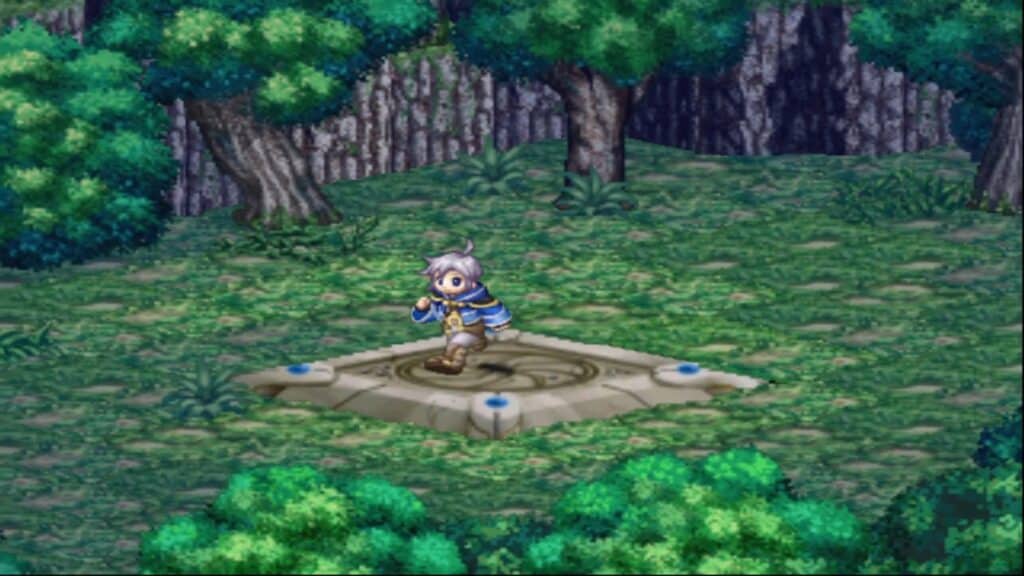
©Screenshot from Atelier Iris 2: The Azoth of Destiny.
Atelier Iris 2: The Azoth of Destiny is a prequel to the previous release. There are two protagonists, Felt and Viese Blanchimont. After a threat appears that makes much of the continent of Eden disappear, the two alchemists-in-training head on a journey to restore the world.
The dual protagonists allow for interesting situations, where you see things from both of these character’s perspectives. Each has their own gameplay advantages – Felt is more hands-on, while Viese helps synthesize the items Felt needs to progress their adventure. You can explore two worlds here, Belkhyde and Eden. Each has their own unique feel and things to do, making it a varied experience throughout.
Atelier Iris 3: Grand Phantasm (2006)
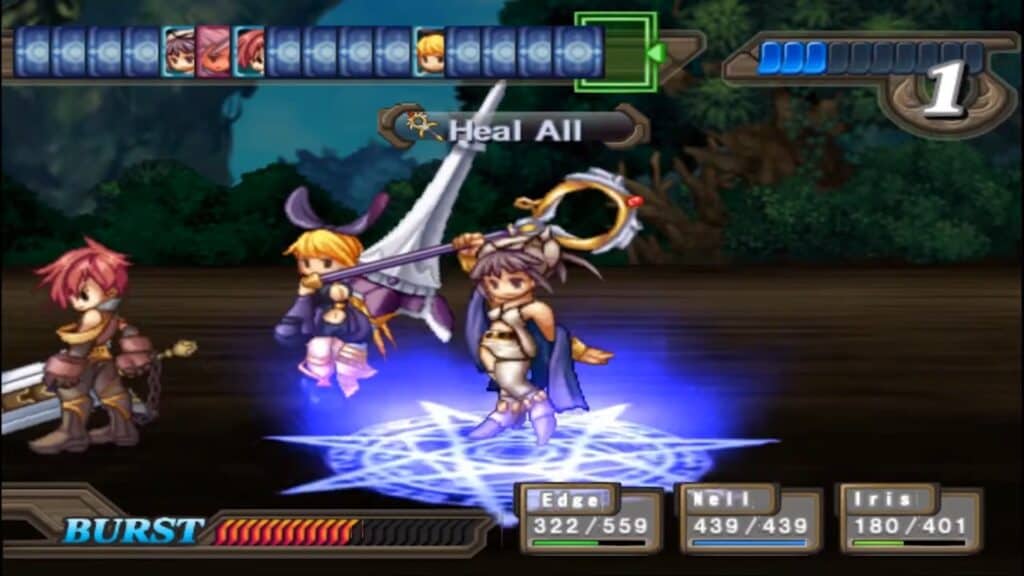
©Screenshot from Atelier Iris 3: Grand Phantasm.
Atelier Iris 3: Grand Phantasm follows Iris Fortner, a young alchemist from the Raiders Guild, and her friends Edge and Nell. The trio are youthful but ambitious, rising their way through the ranks of the Guild through the completion of missions on its behalf. Despite being a part of the Iris series, the story is actually separate the the games that came before.
Throughout the game, you venture into the Alterworlds to complete many of your quests. The town of Zey Meruze is a hub world, and from there you can enter the Alterworlds. You can choose which quests to complete for the Raiders Guild, with no one linear path through the story. Whenever you enter the Alterworlds, a timer will begin where you have to complete the mission. If you don’t succeed in time, you’re pulled out and must try again.
Mana Khemia: Alchemists of Al-Revis (2007)
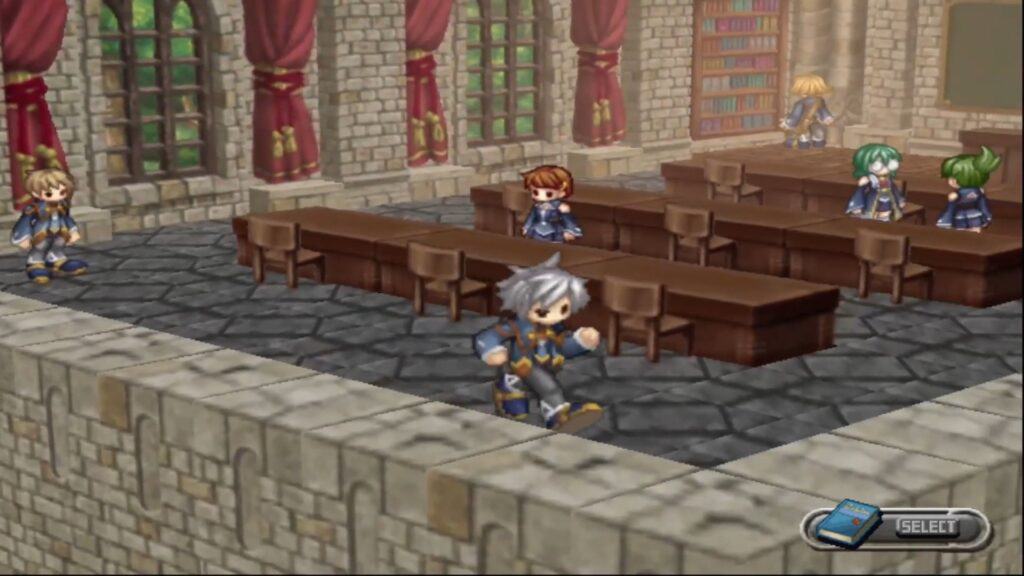
©Screenshot from Mana Khemia: Alchemists of Al-Revis.
Vayne Aurelius, the son of a legendary alchemist, is invited to Al-Revis Academy to receive alchemy training. The game follows Vayne throughout his studies across the three years he’s at the school, where he learns more about himself and his family history.
Item synthesis and alchemy returns in the form of school assignments. Each item has multiple ways to be created, and the quality of the end result depends on the items you use in the first place. Interestingly, some of the assignments require you to purposefully create worse items, so it isn’t always the case that you should create the best possible items. Besides this, the gameplay loop remains similar to previous games in the Atelier franchise.
Mana Khemia 2: Fall of Alchemy (2008)
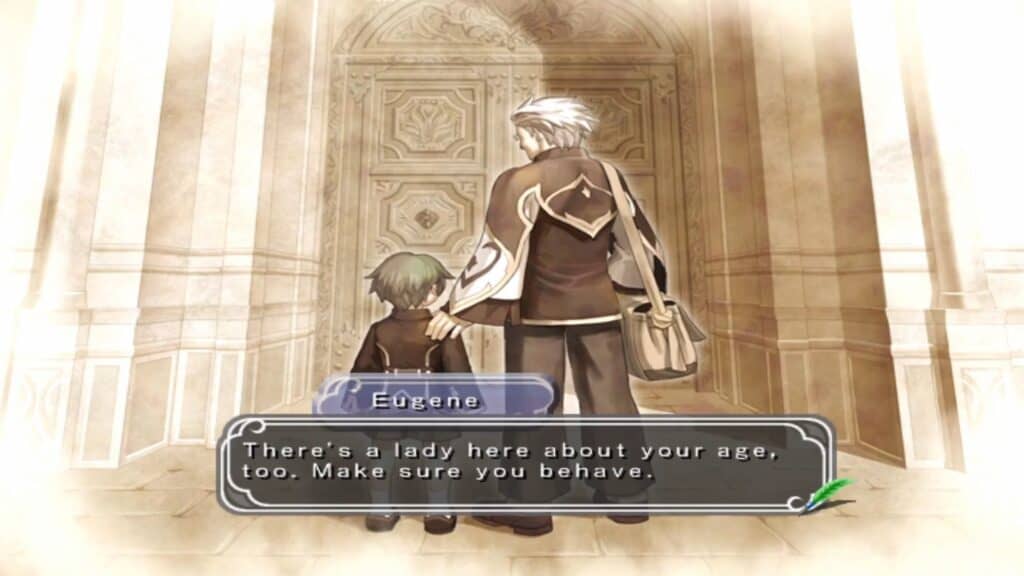
©Screenshot from Mana Khemia 2: Fall of Alchemy.
Set 15 years after the previous game, Mana Khemia 2: Fall of Alchemy finds Al-Revis Academy on the verge of collapse. You play as Raze Meitzen or Ulrika Mulberry as they attend school and go on their own adventure of self-discovery. It’s interesting that you choose your character at the start of the game, as it gives you a wildly different experience depending on who you pick.
The gameplay of Mana Khemia 2: Falls of Alchemy is presented per term. Each school term lasts a few weeks, and in between you must complete different courses and activities to progress. In between, you’re participating in standard Atelier fare, like alchemy and questing.
At this point in the franchise, it is clear that the series formula was never going to see a huge deviation from the norm.
Atelier Rorona: The Alchemist of Arland (2009)
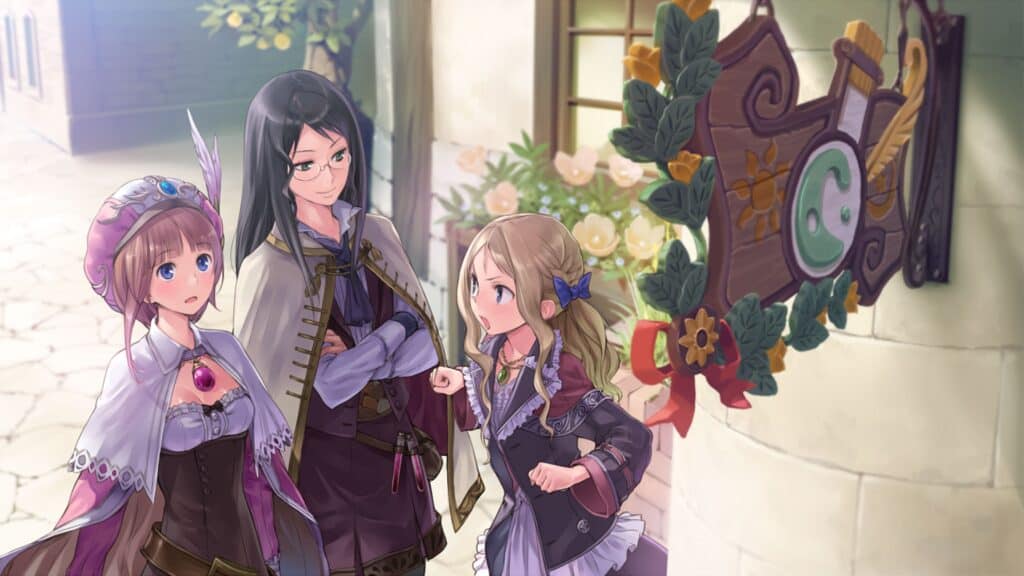
Beginning the Arland series, Atelier Rorona: The Alchemist of Arland follows Rorana Frixell, a young alchemist who is stuck working to absolve her family’s debt. When it looks like her shop is to be shut down, you must help Rorona prove over three years that the store is a valuable addition to the economy of the city of Arland.
In this title, you’ll mainly be doing one of three things: working in the alchemy workshop, exploring the city of Arland with odd jobs, and venturing out of town to gather ingredients. The workshop is where you’ll be doing most of your alchemy, preparing yourself for your other adventures. In Arland, you can take on quests and trade with others in the town. Your quests may take you out of town, where you can also collect ingredients and fight monsters.
In general, Atelier Rorona: The Alchemist of Arland really feels like one of the earlier titles in the series, in the best way. It’s a stripped-back experience that still managed to bring the series into the modern era.
Atelier Totori: The Adventurer of Arland (2010)
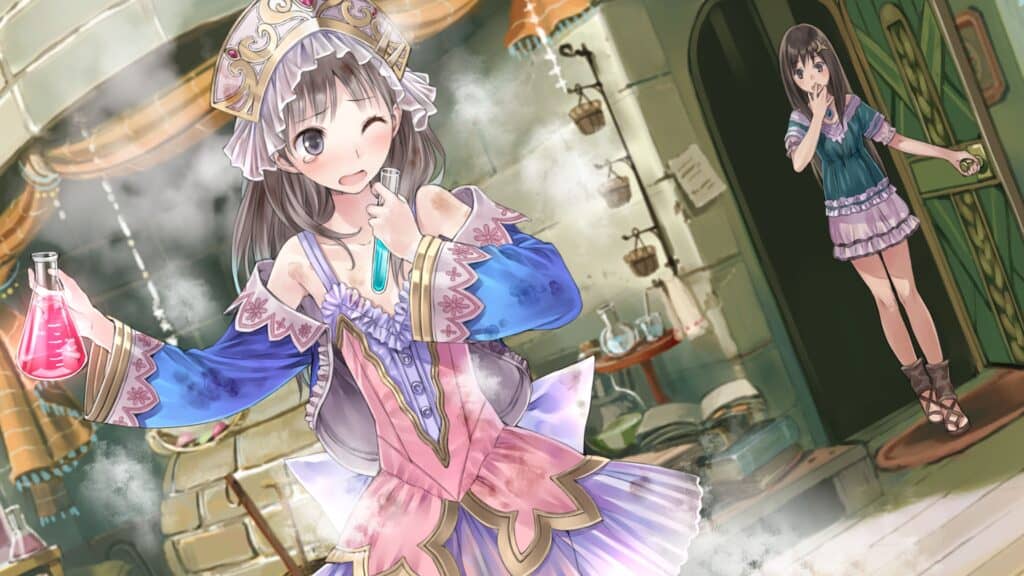
In Atelier Totori: The Adventurer of Arland, you play as Totori Helmond, a student alchemist of Rorona Frixell, the protagonist of the last game. After her mother stops visiting her, Totori becomes suspicious and sets out to discover her whereabouts. What follows is a grand adventure with twists and turns, as Totori hones her alchemical abilities along the way.
Ultimately, you already know what to expect from Atelier Totori: The Adventurer of Arland. Its gameplay mechanics are the same as the previous game, with the main difference being that Totori’s adventure takes place worldwide as opposed to just beyond Arland’s city walls. The story is the real star attraction here regardless.
Atelier Meruru: The Apprentice of Arland (2011)
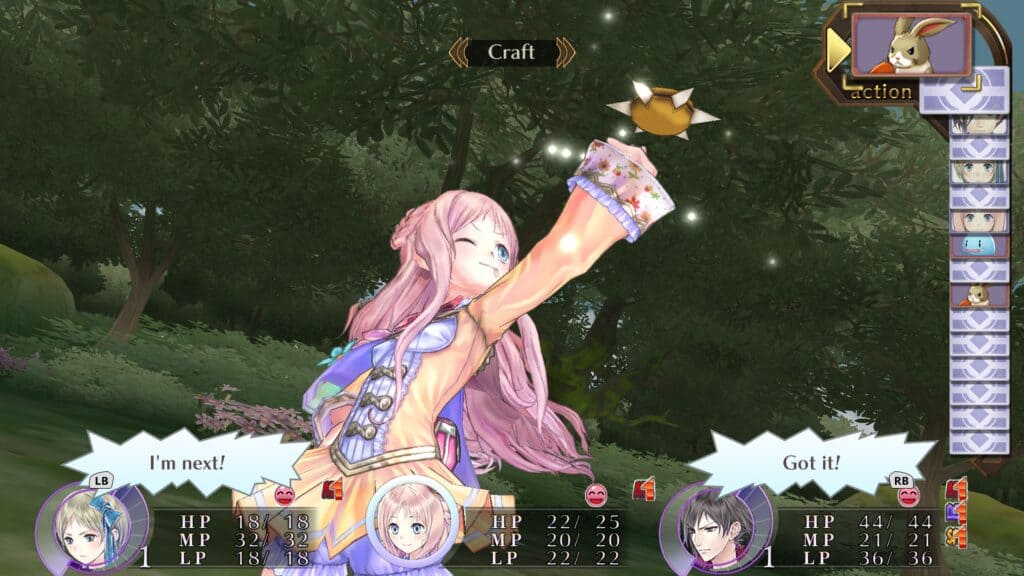
The third game in the Arland series sees the entire storyline come to a head. After plans are made for Arland to merge with the kingdom of Arls, the young princess Meruru becomes an alchemy student of Totori’s. You must help her use her alchemy to help the kingdom reach 30,000 people in three years, and the game gives you a set amount of time to do so. If you fail, Meruru will no longer be allowed to practice alchemy, but succeeding means prosperity for the whole kingdom.
With this time limitation in play, managing your time is crucial to success. It’s always been important for the franchise, but even more so here. The combat system received some tweaks in Atelier Meruru: The Apprentice of Arland, with the introduction of the Cost Turn Battle System. This meant a character’s speed affects how soon their next turn comes, which changes how you manage your stats.
As the final game in the trilogy, it does a good job of upping the stakes while keeping you emotionally invested. There are enough changes in the gameplay that set the franchise up for continued success going forward.
Atelier Ayesha: The Alchemist of Dusk (2012)
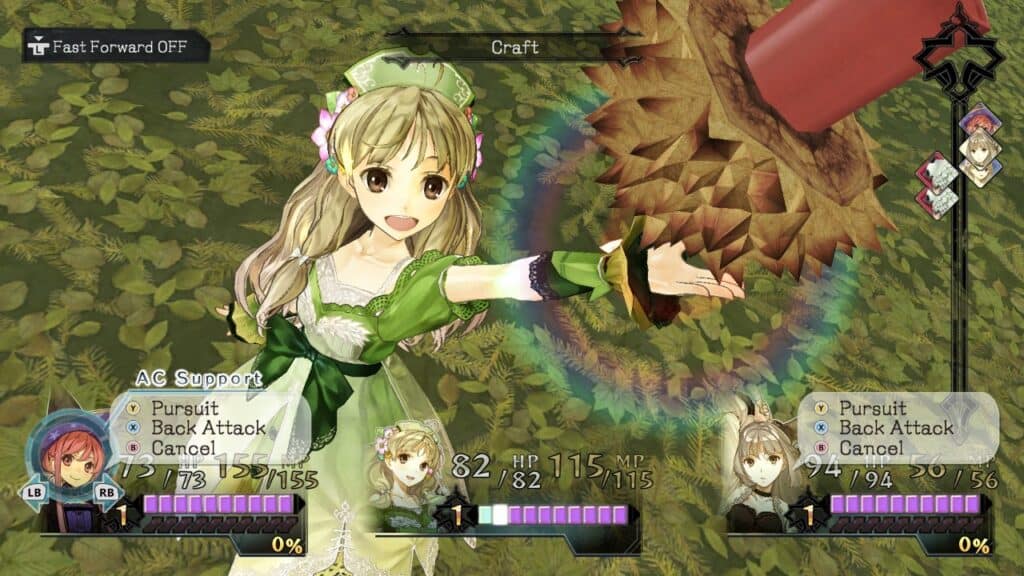
In the new Dusk series, alchemist Ayesha searches for her missing sister, Nio, who she believes is still alive. The stakes are small but personal here, which is where the franchise truly shines.
Atelier Ayesha: The Alchemist of Dusk reintroduces many of the franchise’s core mechanics, bringing alchemy back to the forefront. Synthesizing items takes up days, so you’ve got to be careful managing your time while using alchemy. The battle system is totally overhauled, allowing you to move characters around during combat at will. It’s still turn-based, but you’ve got more control of where your characters are than ever.
Atelier Escha & Logy: Alchemists of the Dusk Sky (2013)
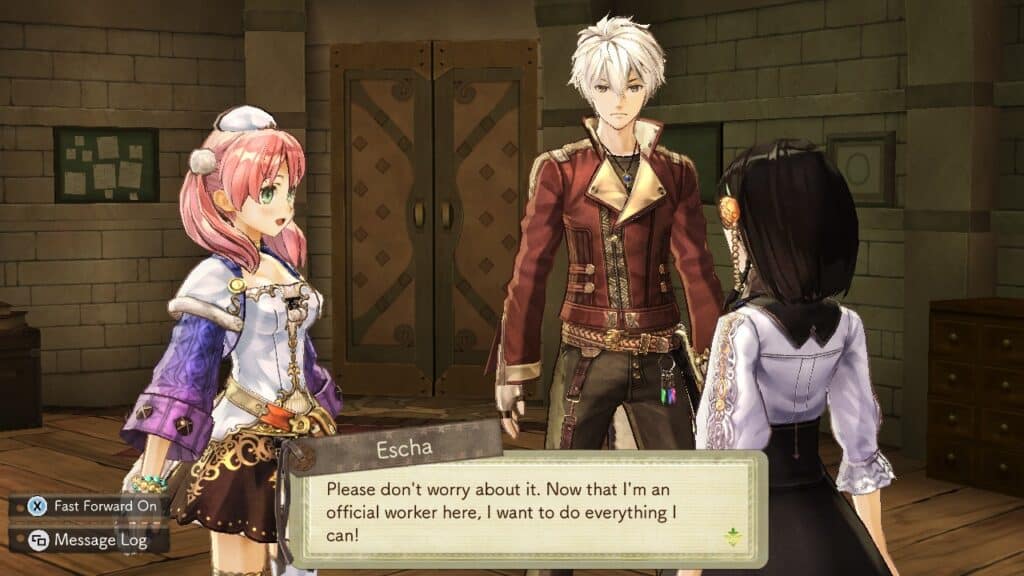
Atelier Escha & Logy: Alchemists of the Dusk Sky once again gives you two protagonists to choose from: Escha and Logy. After an event known as The Dusk leaves the world in ruin, these two alchemists must help the people, while trying to build an airship to reach The Unexplored Ruin, which could hold secrets to healing the world.
What’s interesting about this release is that while you choose between two protagonists, the story remains largely the same. However, certain endings are locked away depending on who you choose. Overall though, you can expect a very similar gameplay experience to Atelier Ayesha: The Alchemist of Dusk here. With these games being released yearly, the focus is very much on the story.
Atelier Shallie: Alchemists of the Dusk Sea (2014)
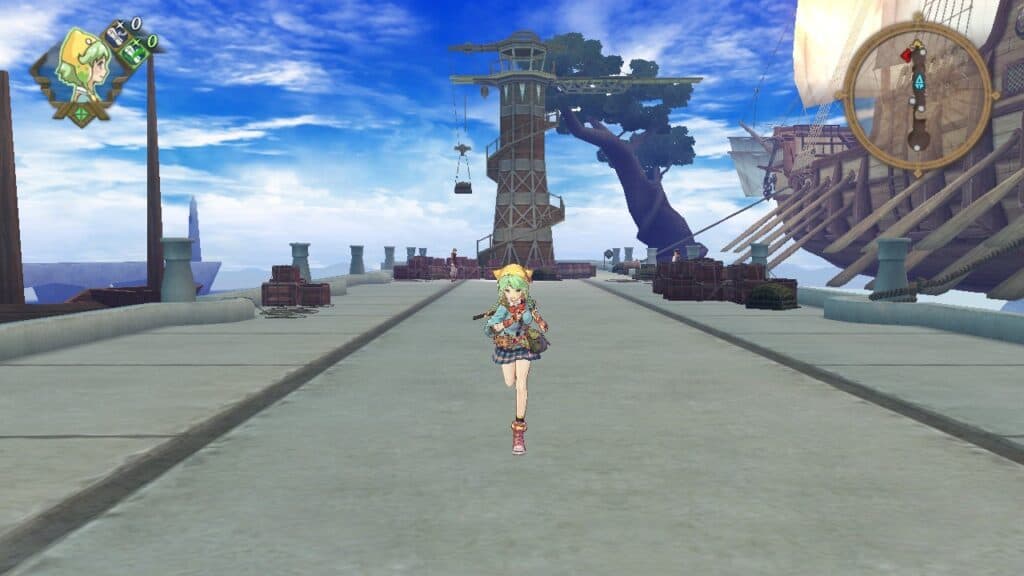
Shallistera and Shallote are the two selectable characters here, each with their own branching storylines. If you choose Shallistera, you’ll follow her on her adventure to Stellard to save her home, Lugion Village, from a huge drought. Meanwhile, Shallote’s storyline is a lot more subdued. With her, she stays at home as she attempts to become a master alchemist.
You won’t be too shocked to hear that Atelier Shallie: Alchemists of the Dusk Sea plays exactly like its predecessors. In some instances, it even simplifies some mechanics that were previously complex. For some, this was where the repetitive nature started to get old, despite the good reviews of the game.
Atelier Sophie: The Alchemist of the Mysterious Book (2015)
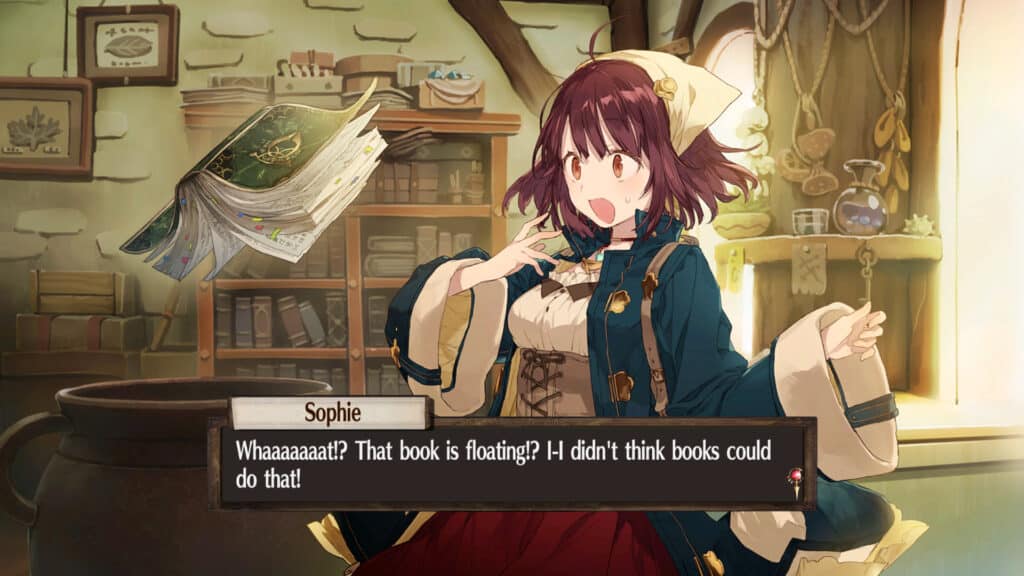
Atelier Sophie: The Alchemist of the Mysterious Book follows Sophie Neuenmuller, a young alchemist who finds a magical talking book by the name of Plachta. Formerly a book about alchemy, Plachta has lost all of its memories and is now completely blank. Throughout the game, you must help Emily fill up the book with alchemy recipes, restoring Plachta’s memories.
We actually see quite a few gameplay overhauls in this release, refreshing the overall experience. Alchemy is a puzzle mini-game this time around, making it more of a challenge throughout. The Friendship affinity system also provides new ways to interact with NPCs, and can have some positive gameplay benefits if you play your cards right.
Atelier Firis: The Alchemist and the Mysterious Journey (2016)
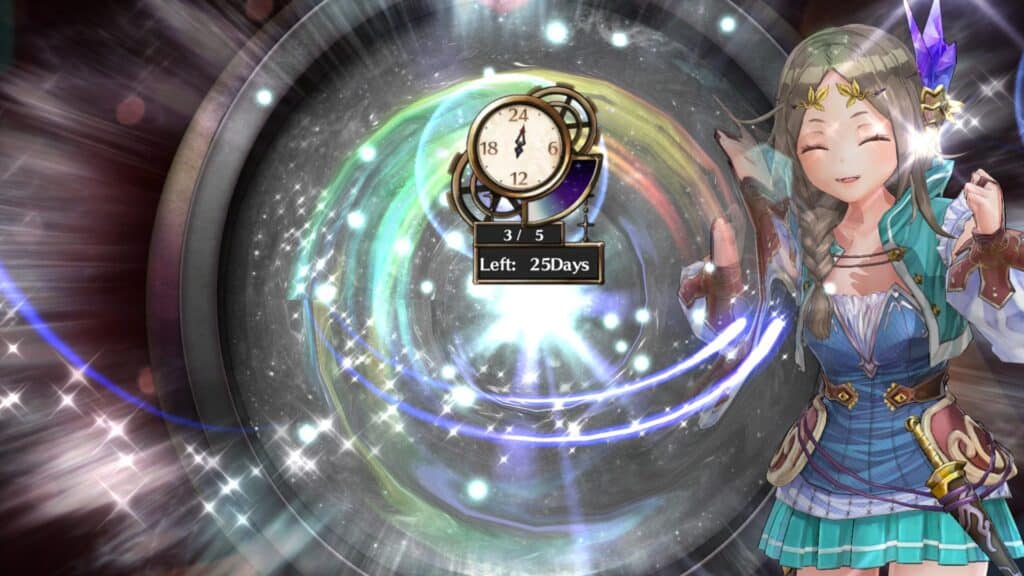
Atelier Firis: The Alchemist and the Mysterious Journey follows Firis Mustlud, a miner with great promise in alchemy. After this potential is discovered by Sophie Neuenmuller, Firis begins her adventure in the wider world. Throughout the game, she must work to collect recommendation letters from alchemists to be able to take an exam to become certified herself.
Most Atelier games take place over several years. However, Atelier Firis: The Alchemist and the Mysterious Journey gives you just one year to complete your goal, meaning you’ve got to move quickly in order to take those letters for Firis. This makes time management arguably the most important element of this iteration.
Atelier Lydie & Suelle: The Alchemists and the Mysterious Paintings (2017)
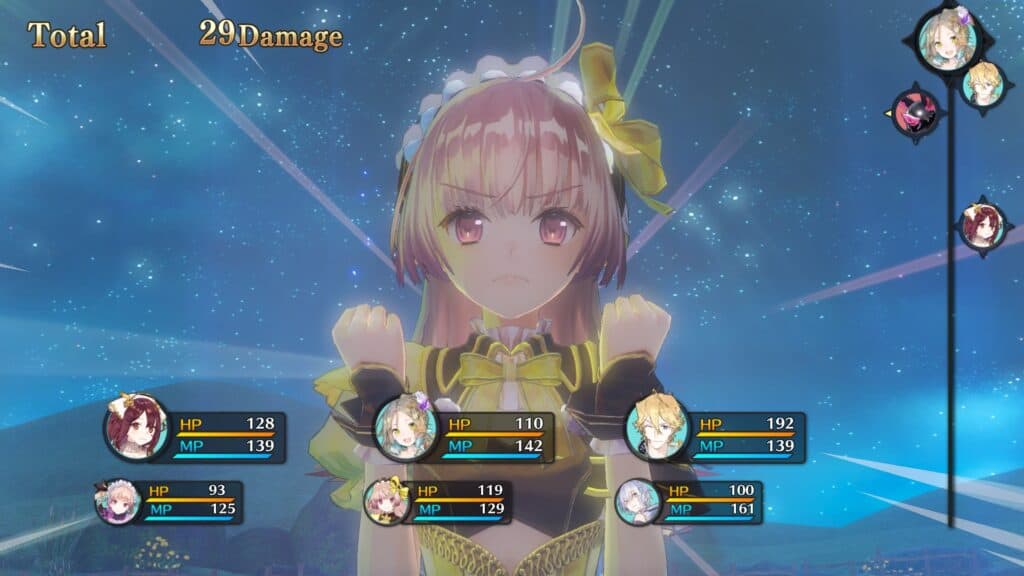
The third game in the Mysterious series, Atelier Lydie & Suelle: The Alchemists and the Mysterious Paintings finds twin sisters Lydie and Suelle Malen dreaming of running the kingdom’s most prestigious atelier. After exploring areas they shouldn’t, the pair are transported into a magical painting, where they must find their way out once and for all.
The paintings are key to the gameplay here. As you complete challenges, your Atelier Rank increases. This allows you to hop to new paintings, giving you access to a whole new world to explore. In previous Atelier games, two protagonists usually meant choosing one at the start of the game. This would then send you on two diverging paths, with different stories for each. Here, the two protagonists are together experiencing the same story. You can then switch between them at any time.
Atelier Lulua: The Scion of Arland (2019)
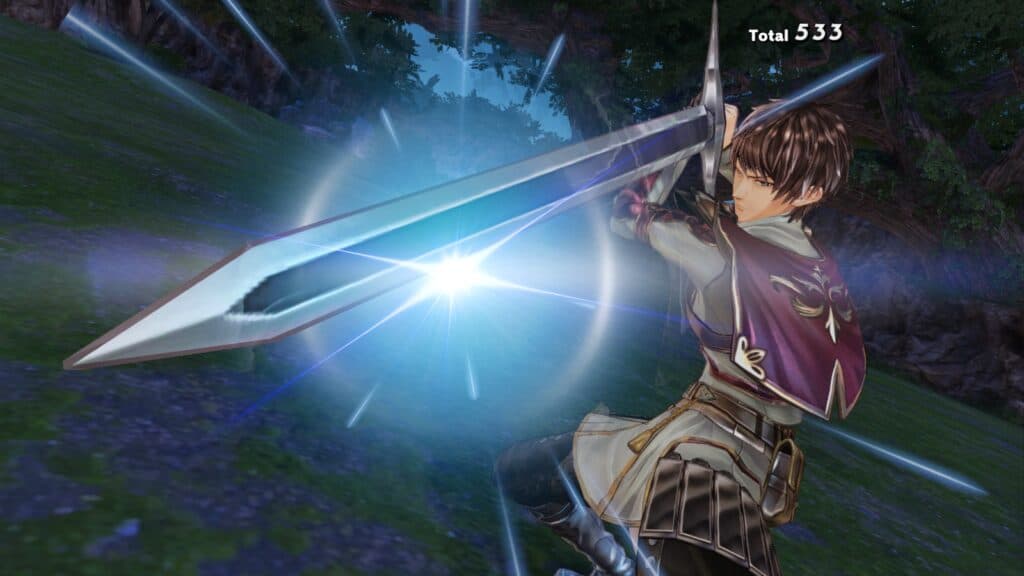
Released eight years after the previous Arland game, Atelier Lulua: The Scion of Arland sees you play as Lulua, the daughter of Rorona. Lulua dreams of becoming the best alchemist in the world, but struggles to live up to her family reputation. Her life is turned upside down when she finds a book named The Alchemyriddle. For some reason, only she is able to understand it, and the story is about her journey to decipher everything it has to offer.
Despite being part of the Arland series, the game takes some of the newer gameplay innovations from the Mysterious series to make it feel more modern. Overall, it’s considered to be a good addition to the Atelier series, and worth the wait for Arland fans.
Atelier Ryza: Ever Darkness and the Secret Hideout (2019)
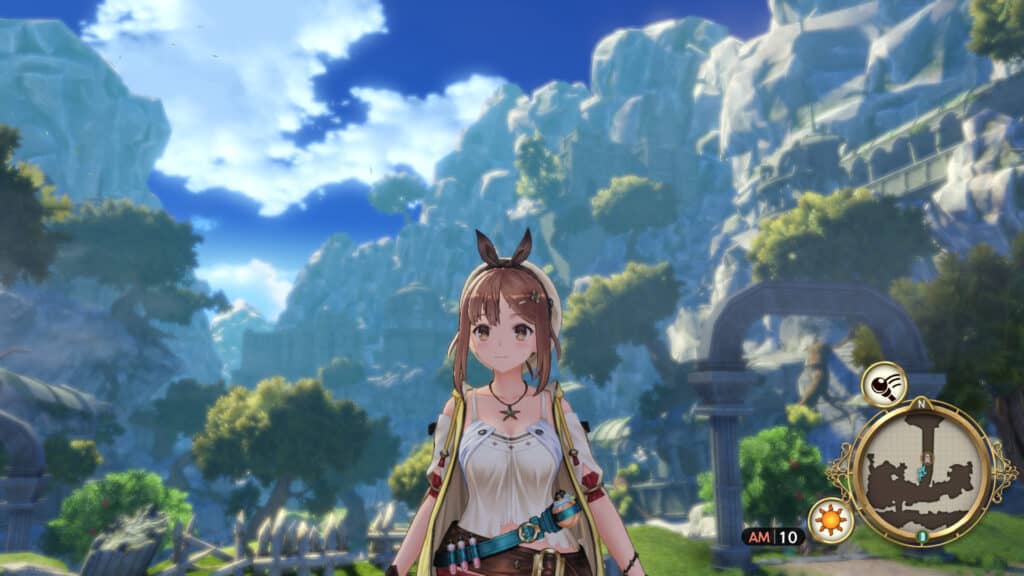
The new Secret series of Atelier games begins here, with Atelier Ryza: Ever Darkness and the Secret Hideout. It follows Ryza Stout, an adventurous young girl with a penchant for alchemy. After finding an abandoned rowboat, she sets off from her home on Kurken Island in search of a greater purpose. It’s a real back-to-basics story, but one that is massively effective.
Atelier Ryza: Ever Darkness and the Secret Hideout saw a massive overhaul of the combat system – perhaps the biggest in series history. Real-time turn-based combat makes its way into the game, with time continually passing during battle. Characters still only have the ability to act when it’s their turn, but time doesn’t grind to a halt. The MP bar is replaced by action points, which can be used to use different abilities. It may not seem like a huge change, but in gameplay it makes all the difference.
Atelier Ryza 2: Lost Legends and the Secret Fairy (2020)
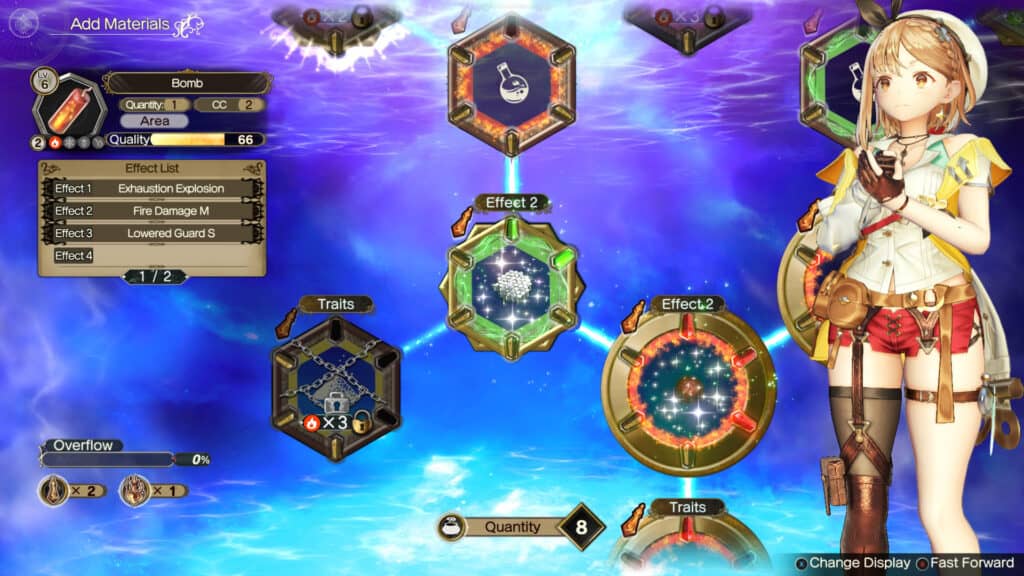
Set three years after the previous Secret game, Atelier Ryza 2: Lost Legends and the Secret Fairy continues Ryza’s story. Back on Kurken Island, she has taken on the duty of teaching alchemy to children. Amidst the feeling she may have hit her potential, Ryza is called back into action when she travels to the city of Ashra-am Baird.
You’ve got a ton of new ways to interact with the environment in Atelier Ryza 2: Lost Legends and the Secret Fairy. There’s a new Synthesis tool called the Emerald Band, which offers new ways to explore the game’s dungeons. The huge new addition is the ability to go underwater. Exploring underwater allows you to discover plenty more materials, and there are even new hidden dungeons for you to find along the way. It’s a massive change that alters how exploration works for the series forever.
Atelier Sophie 2: The Alchemist of the Mysterious Dream (2022)
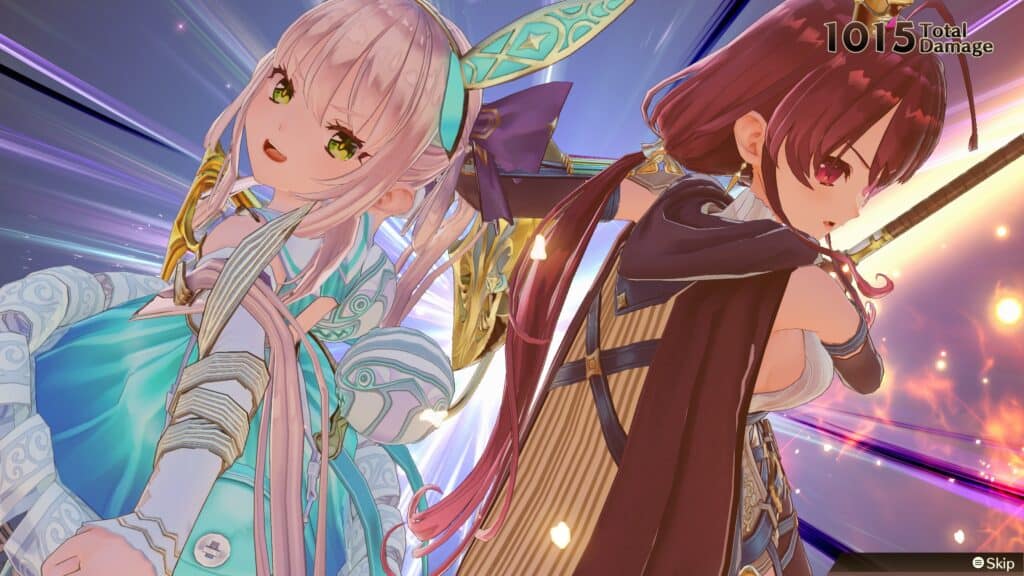
Continuing the adventures of Sophie and Plachta, Atelier Sophie 2: The Alchemist of the Mysterious Dream finds the pair pulled into the new world of Erde Wiege. There, they meet a young alchemist also named Plachta, who doesn’t appear to recognize the duo. With the help of Remizel Erlenmeyer, they must attempt to return to their own world.
Despite being released seven years after the original, Atelier Sophie: The Alchemist of the Mysterious Book, this game actually plays remarkably similarly. The alchemy subgame returns, with more complexity than ever. You can now learn to create items via the Recipe Tree, which saves everything that you know. However, the combat is barely touched from the previous releases in the franchise.
Atelier Ryza 3: Alchemist of the End and the Secret Key (2023)
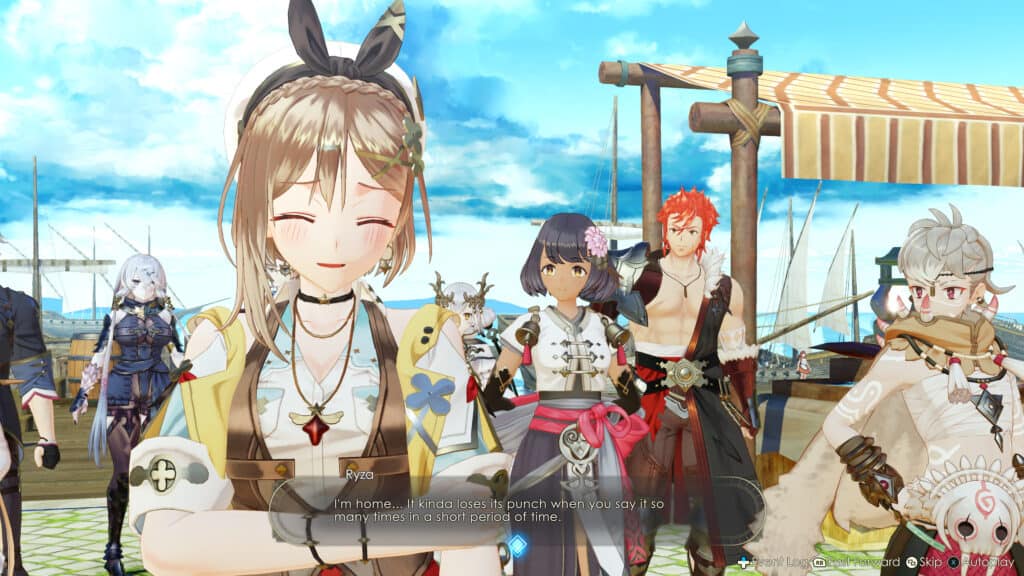
Atelier Ryza 3: Alchemist of the End and the Secret Key brings Ryza back for one final adventure, where she must explore a bunch of mysterious islands named the Kark Isles that began to pop up worldwide. Along the way, you must help her find a set of keys that give her various boosts throughout her adventure.
In this game, there are a total of eleven characters that you can meet and bring into your team. This makes it one of the bigger casts in the franchise to date. The addition of the collectible keys was also an interesting change, as it added an extra dynamic to think about during Synthesis and combat. However, in terms of true innovation, there’s only one massive addition. The environment in Atelier Ryza 3: Alchemist of the End and the Secret Key is open-world, allowing you to move between areas without loading screens. Hopefully, it sets the standard for Atelier titles in years to come.
Atelier Remakes, Enhanced Editions, and Spin-Offs
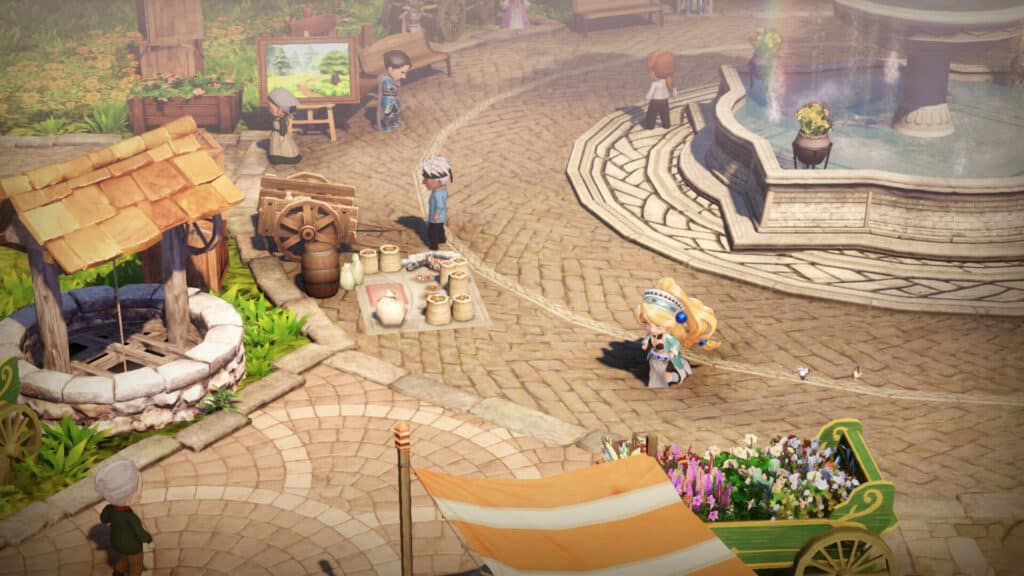
While the Atelier series has an absurd amount of games in the main series, Gust has ensured that there are also plenty of remakes, enhanced editions, and spin-offs for fans of the franchise to enjoy. The studio can certainly never be accused of a lack of output. Here’s the full list of games that fall into this bracket:
- Hermina and Culus: Atelier Lilie Another Story (2001)
- Atelier Marie, Elie & Anis: Message on the Gentle Breeze (2003)
- Mana Khemia: Alchemists of Al-Revis (2007)
- Mana Khemia 2: Fall of Alchemy (2008)
- Atelier Annie: Alchemists of Sera Island (2009)
- Atelier Elkrone: Dear for Otomate (2011)
- Atelier Questboard (2011)
- Atelier Questboard 2 (2012)
- Atelier Marie Plus: The Alchemist of Salburg (2012)
- Atelier Elie Plus: The Alchemist of Salburg 2 (2012)
- Atelier Lilie Plus: The Alchemist of Salburg 3 (2012)
- Atelier Questboard 3 (2013)
- Atelier Rorona Plus: The Alchemist of Arland (2013)
- Atelier Totori Plus: The Adventurer of Arland (2012)
- Atelier Meruru Plus: The Apprentice of Arland (2013)
- Atelier Rorona DX (2018)
- Atelier Totori DX (2018)
- Atelier Meruru DX (2018)
- Atelier Ayesha Plus: The Alchemist of Dusk (2014)
- Atelier Escha & Logy Plus: Alchemists of the Dusk Sky (2015)
- Atelier Shallie Plus: Alchemists of the Dusk Sea (2016)
- Nelke & the Legendary Alchemists: Ateliers of the New World (2018)
- Atelier Online: Alchemists of Braceir (2018)
- Atelier Lulua Plus: The Scion of Arland (2020)
- Atelier Escha & Logy: Alchemists of the Dusk Sky DX (2020)
- Atelier Sophie: The Alchemist of the Mysterious Book DX (2021)
- Atelier Firis: The Alchemist and the Mysterious Journey DX (2021)
- Atelier Marie Remake: The Alchemist of Salburg (2023)
- Atelier Resleriana: Forgotten Alchemy and the Liberator of Polar Night (2023)
The image featured at the top of this post is ©Koei Tecmo.
